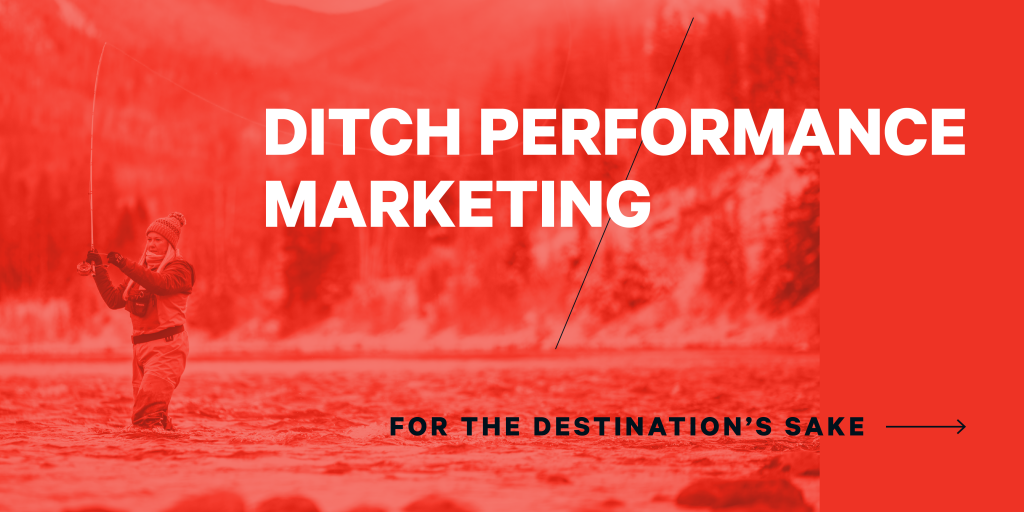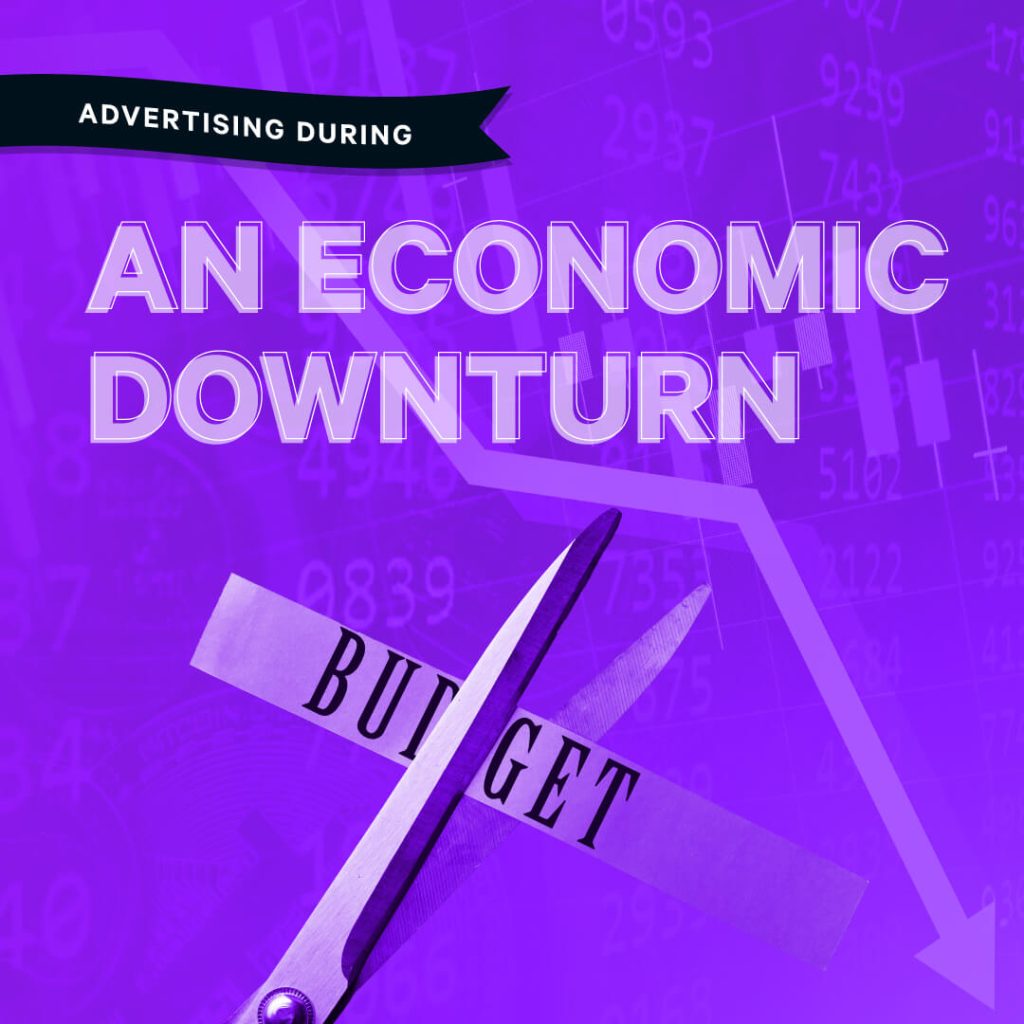Stop Performance Marketing One-of-a-Kind Destinations to Death [And What to Do Instead]

If you’ve ever been in a destination marketing board meeting, you know the drill. The tourism marketers stand up, drop a bunch of nice-looking numbers, and then sit back down.
If the numbers are up big, everything is good. If they’re up just slightly there might be questions. If they’re flat or declining, watch out.
Numbers have become the currency of travel marketing. Quality, context and strategy are often flung out the door in favor of rising social media trend lines or paid media click-through rates. At its worst, it is like driving a car without looking out the windshield. Faster is better. Peg the gas pedal to the floor, no matter what collision may occur. The ascending numbers on the speedometer are all that matter.
It seems like almost every marketer has fallen in love with numbers. This profession that once moved people’s hearts and souls has now been reduced to mathematics.
The allure is understandable. Numbers cannot be argued with. They are solid, indisputable — even seductive in their own linear way.
But this approach has landed many destinations in a predictable place — a car crash of deteriorating destination experiences, fed-up local communities and long-term destination brand erosion.
Some destinations now have an entirely new challenge in front of them — working to unwind years of performance marketing “success” that is essentially eating their destination alive.
Sometimes, it takes hindsight to recognize mistakes. What seemed good in the moment looks completely different in retrospect.
Such is the case with destination marketing over the last decade. Performance marketing tactics have delivered feel-good figures for years, justifying budgets and marketing strategy, only to deliver a problematic present where overcrowded destinations struggle with the after-effects.
Destinations Cannot be Duplicated
First, let’s be clear. This is not an indictment of performance marketing. This is an indictment of poorly guided performance marketing in the particular context of one-of-a-kind destinations.
Travel is a completely unique form of marketing that requires a completely unique approach. Things that work in other industries don’t fit tourism. The Abbi Agency, for example, has a deep background in software-as-a-service marketing, and, in that case, supply is essentially unlimited and the only challenge is generating demand.
Destinations, on the other hand, are finite resources and their appeal is directly connected to a delicate balance between supply and demand. Using a software marketing approach (or many other approaches that work for other verticals) to destination marketing might look good in the moment but could destroy the destination in the long-term. This is a topic that our fearless leader Abbi Whitaker have been focusing on for years and has written about for Forbes.
Once you have damaged the brand of a destination — when it is seen as overcrowded and the local communities have reacted to this over tourism negatively — it can take years to unwind the brand damage.
Remember, there is only one destination. Preserving it is priority number one. Degrading it for one season of strong performance metrics and record lodging revenue is short-sighted at best.
Data-informed not Data-driven
The language of marketing has shifted toward “data-driven” everything. Decisions are dictated by numbers. Everything must go up and to the right infinitely.
At The Abbi Agency we believe strongly in data, but we have shelved the term “data-driven” for a philosophy of “data-informed” decision making. Strategy and vision should not be dictated by figures. Strategy and vision should lead and data should be used as a tool to refine execution of a marketing approach.
What does this mean? We think of places and people in their full context. This is a reversal from the automated, transaction-driven approach of the past and takes a lot more of the human-driven strategy and context that marketers should bring to the table. This is also something we’ve written about before.
“Right now, however, we need to reframe our understanding of our roles. We need to understand that our audiences are not merely transactions that impact our reporting and balance sheets, and instead are fully realized people.”
Balancing Short-term Goals with Long-term Vision
You see this in the corporate world all the time, short-sighted CEOs goosing immediate quarterly profits at the expense of long-term growth. The outcomes are almost universally disastrous. One day the company is the darling of the media and Wall Street. The next week the company crumbles under the weight of its lack of long-term vision.
Destinations are no different. Savvy tourism marketers should be thinking about what they want the destination to look like in 10 or 15 years, and putting in place a long-term strategy that incrementally moves the destination in that direction.
That means looking at a destination much less like a modern marketer and much more like a strategist and visionary. For a long and growing list of destinations like Maui, Yosemite and Tahoe this might mean jumping completely out of the world of click-throughs and bookings and looking at sustainable travel initiatives and off-season travel programs.
What Needs to Change
The Abbi Agency is fortunate to work with a wide range of destinations that are already incredibly strategic and have strong long-term visions — places like Carmel-by-the-Sea, Edgewood Tahoe, Kalispell, Montana and Goleta, California.
In Kalispell, we launched a digital campaign to get visitors to download and use an in-depth travel guide that would open them up to richer experiences within the destination. By focusing on attribution we could see the campaign’s strategic approach engage an audience, guiding them to spend more time supporting local business and overlooked aspects of the destination through travel guide-inspired experiences.
But there are still destinations out there struggling to define their vision or suffering from the after-effects of a vision-less, numbers-driven performance marketing quest.
So what should a destination in that position do?
Attribution is as important as performance.
Data that shows a traveler took a real-world action (not just a digital outcome) is of greater importance than simple performance metrics like clicks and impressions. Attribution shows you influenced a traveler’s behavior, driving them to act on one of the destination’s key goals, whether it be booking in the off-season, supporting local business or exploring lesser known locations within a region.
Here’s a dirty little secret: Marketers often dislike sharing these metrics because performance data is often more eye-popping. But performance data can be fool’s gold, glittery but often inflated by empty bot engagement or filler traffic.
Balance strategy and metrics.
Pursuing great-looking data absent strategy can be a perilous road to travel. Pushing travelers to overcrowded weekends may look good on month-end data reports, but could turn off visitors, overload businesses and degrade the experience. Establishing a strategy and then defining metrics that lead back to each of these goals is key to moving a destination in the right direction. Strategy should lead and data should follow.
Identify the carrying capacity of a destination.
A destination can only take so much tourism. Pinning down the carrying capacity of your city, town, county or region, and letting off the gas pedal when you have filled hotel rooms and brought in enough visitors, is a key component of smart strategy. This means understanding that marketing data will level off, and that that is a good thing. Performance marketing data upticks when a destination is over capacity is actually a bad thing. A drop off in marketing spend and a decrease in engagement would actually be a desired outcome when a destination is overcrowded.
Value quality above quantity.
More is not always better. Better is actually better. Engaging visitors to stay longer and invest in more quality experiences is one way to grow revenue without just packing people into a destination. While these metrics are habitually tracked by hospitality groups as RevPAR (revenue per available room), moving the needle on this metric is a marketing challenge that takes creativity and a concerted effort.
An increase in the spend of a visitor might not correlate with an uptick in social media engagement or paid media performance. These goals may be achieved by a deeper engagement with a destination’s audience, and content campaigns that build educational, inspirational and aspirational connections with visitors.
Think lifetime value.
Travel is a lifelong endeavor and over a human lifetime, a traveler will often return to favorite destinations dozens and dozens of times. Visionary marketers understand that lifetime value is a powerful approach to marketing. It prioritizes retention as highly as acquisition. The key is seeing into the future, engaging with emerging consumers in authentic ways. If you can establish and build a relationship with a young traveler, even if they are spending minimally in the destination now, the value over the traveler’s lifetime may be enormous.
Consider a young single traveler who falls in love with a destination, returns year after year, decade after decade as he or she gets married, has children, has grandchildren. Jeopardizing that relationship for a one-time transaction — an overcrowded weekend where he or she is turned off by the destination — would be a significant mistake. As would categorizing such a traveler in a low-priority “persona” because of their current spendthrift traveling habits.
A Post-COVID Reconsideration
Destinations across the globe are faced with unique challenges. A strong rebound in travel has been unleashed on hospitality businesses struggling to staff up and accommodate this pent-up demand.
Now, more than ever, is the time for marketers to ask themselves if they are being thoughtful, strategic and creative in their marketing efforts. Are they adapting with the destination’s unique demands or are they simply chasing numbers higher and higher, no matter the long-term impact on the unique communities they represent.



